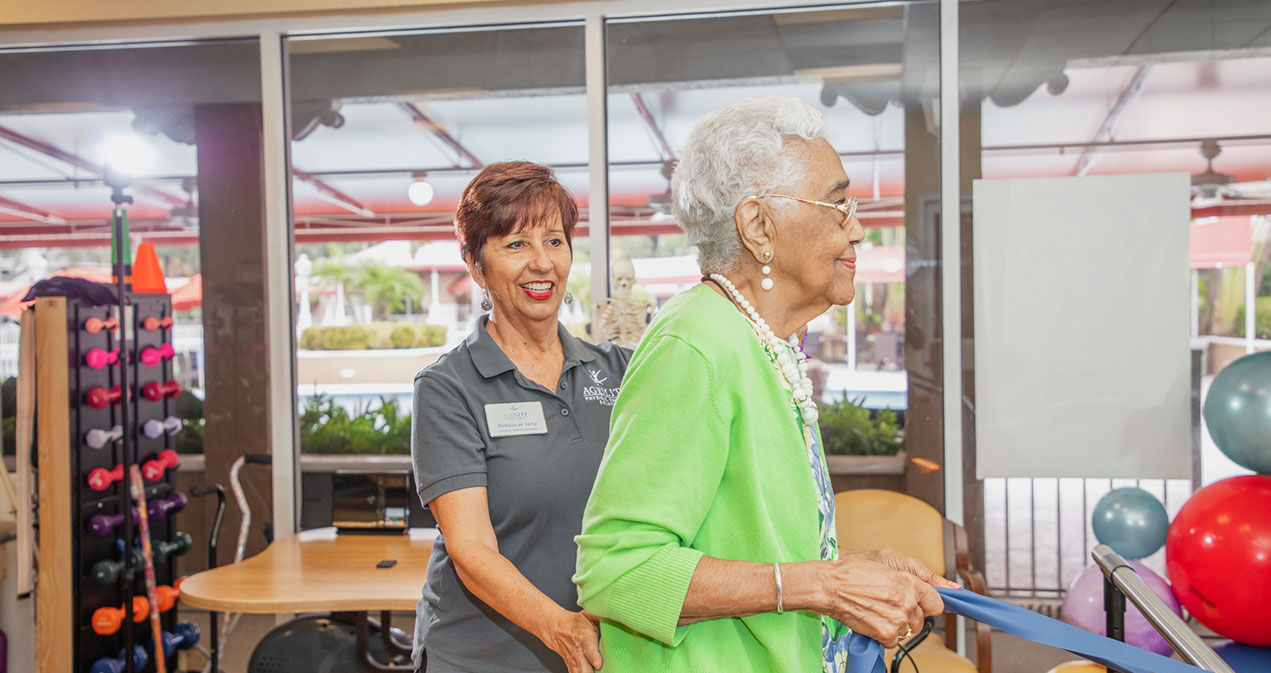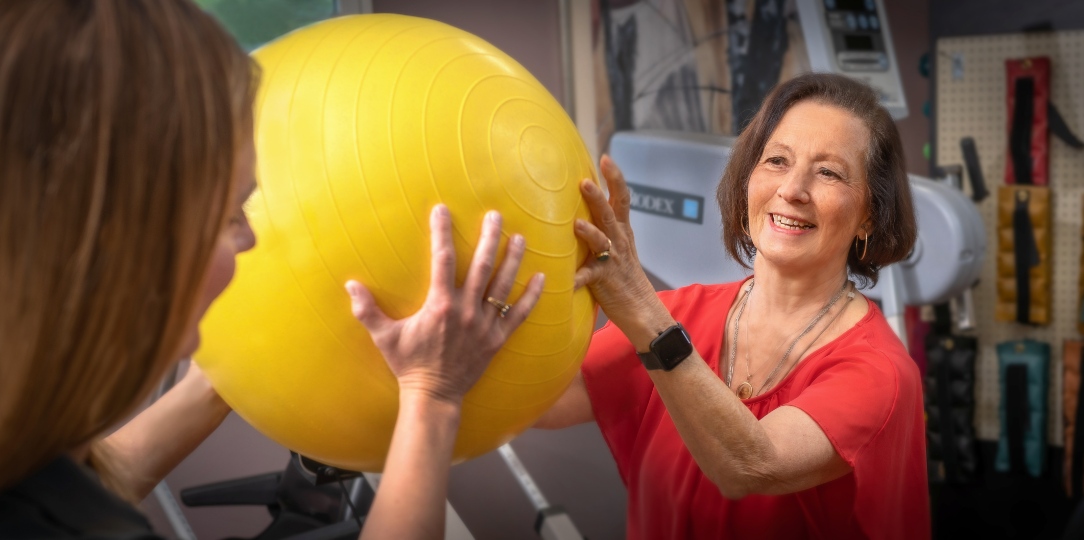Seniors and Physical Therapy: It’s Not Just Rehab Anymore
May 10, 2021Physical therapy for seniors isn’t what it used to be—not at Ageility clinics, anyway. Time was that physical therapy was seen as one way to help older adults bounce back from an accident (such as a fall), injury, surgery, pain or illness. Therapeutic exercise, manual therapy, hot and cold therapy, traction—these and other go-to methods for physical therapy were all about rehabilitation and recovery.
However, as senior Bob Dylan—he will turn 80 in May—once famously sang, the times, they are a-changin’. For today’s older adults, physical therapy also means getting back to the golf course or tennis court, swimming like an Olympian, or running road races.
According to Denise Kelly, founder of Ageility, yesterday’s physical and occupational therapy only took the patient part of the way. “The traditional model was to tell the patient, ‘Do this,'” Denise says. “But we recognized that many people are motivated to take care of themselves and to be as well as possible, which we see in independent living communities.”
Ageility is reinventing rehab for older adults
And so Ageility is reinventing rehab for older adults, offering not just recovery interventions but prevention and fitness training in its clinics. Prevention helps senior living residents avoid falls and other catastrophic events, while fitness training helps older adults stay active as long as possible—even to the point of achieving goals they’ve had all their lives, such as running a marathon.
Denise says the Ageility approach honors the fact that attitudes toward aging are changing and that today’s seniors are redefining what is possible in our later years.
“Retirement doesn’t have to mean sitting on the couch all day, and we know that’s not what people want,” Denise says. “Older people want to be productive. They want to be as fit as they can be.”
Erica Leiva, a rehabilitation director for Ageility based in Florida, agrees. “Many of us who trained in geriatrics were told that older people couldn’t improve, that the goal was just to maintain,” Erica explains. “Ageility helped me see—and brought out in me that hope—that a senior can improve at any age. They want that and they should have it, and we’re committed to working with our residents to make it happen.”
Tennis, anyone? Sports medicine for seniors
What does reinventing physical therapy look like? Simply put, it covers a wider range of services as well as possibilities for the patient. Physical therapy includes prehab (strengthening muscles prior to surgery to optimize recovery after), postsurgical rehab, fall prevention, pain management, and strength and flexibility training—and sports medicine.
Sports medicine for seniors? Yes—because today’s older adults are redefining aging. Ageility sports medicine specialists work with residents who want to be more physically active doing the things they love, like golf, tennis, swimming, or running. Regardless of age, ability, or athletic history, they help everyone achieve their physical potential.
Also making Ageility unique is its hospitality approach. “What makes Ageility different is that we have a hospitality background,” Denise says. That means that in addition to including the very latest evidence-based techniques and equipment, Ageility’s clinics possess a warm familiarity as part of the neighborhood environment.
“Ageility really understands the importance of outpatient therapy in our residents’ lives,” Erica adds. “To me, outpatient therapy is the future of rehabilitation medicine. That’s where all the fine-tuning and the magic happens.”
Not just getting better, but better living for older adults
Ageility offers the full gamut of rehabilitative services—physical therapy, occupational therapy, and speech language pathology —but it combines these services with a clients other goals which may include not just getting better but living better. That, Erica, explains, is what makes Ageility unique, for physical therapy and beyond. “We love to give them hope,” she says. “We love to help older adults enjoy a better quality of life. We love to see the difference we get to make in people’s lives.”
Experience PT designed for older adults who want to live better
Does Ageility sound like the solution you need – for yourself or your senior living community?
Find an Ageility clinic or learn more about Ageility partnerships.



